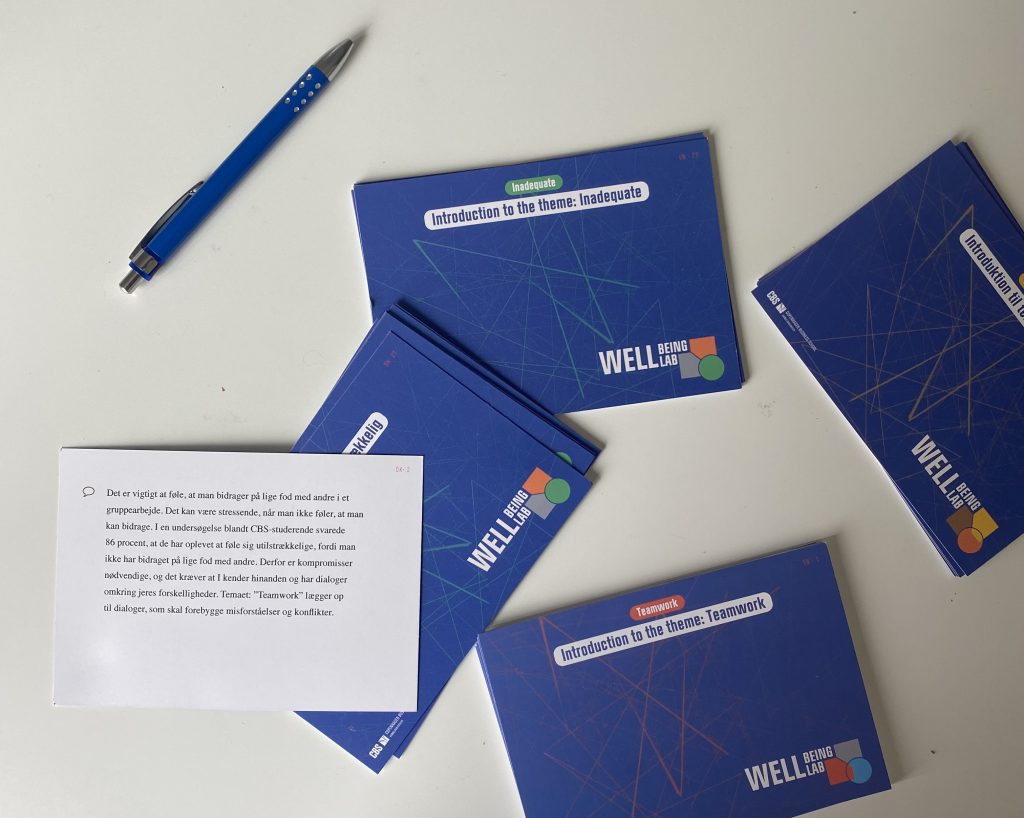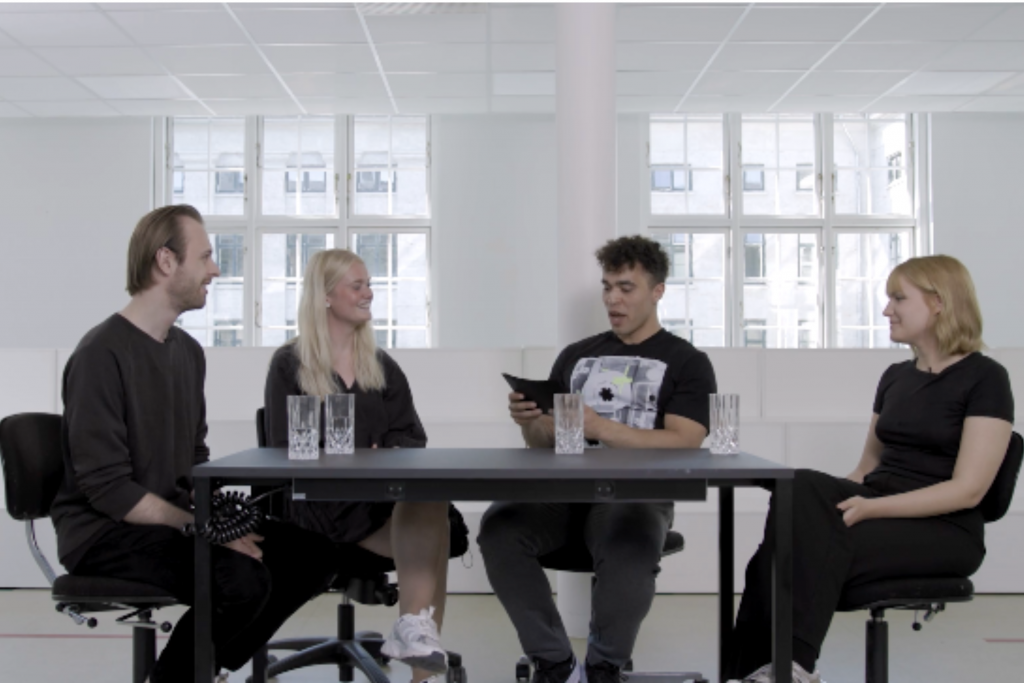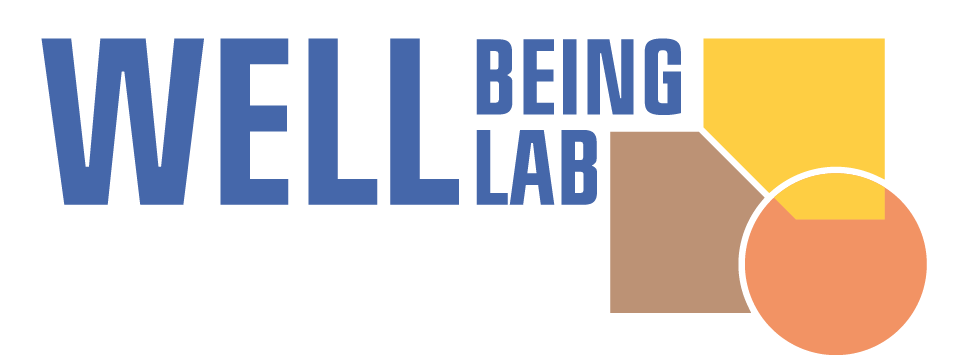Use the material in teaching
Find here some different ideas of how to use the material for teaching purposes
We have developed three kinds of materials that are available on this website – the dialogue cards, podcasts and videos. Additionally there is a lot of written material on the site across a range of different themes related to stress prevention and enhancing well-being among students.
Deciding the format for the class
The material can be used and put together in many different ways, so it will depend on the time you want to use and whether it is a one-time event or perhaps a theme over several classes. It can either be developed as an overall “well-being” class, addressing different aspects of all the topics presented here on the site, or it can be a tailored class for a specific theme, for example group work or a focus on new students.
A simple structure
A simple way to work with the material and get started easily is to choose one theme and select a few videos and/or one or more podcasts that fits. Make the students listen and provide them with some reflection questions. They can either listen or watch in class all together, in smaller break-out groups, or at home as preparation before a class. You can also decide whether to give the reflections questions beforehand as a preparation or distribute it in class. Let the students discuss the questions in groups and follow up after in plenum in the end of the session to hear everyone’s reflections and tie it together. Sum-up what has been the main lessons learned from the material.
It should be easy to find material related to specific topics as they have been organized in relation to broad themes and all videos and podcasts have a short description that gives an idea of the topics it addresses. Often the videos and podcasts will cover several topics at the same time, because the topics relate to each other. It is therefore not possible to divide them sharply after topics, but we have tried to highlight the main topics covered within each and the overall focus. Another way is to read about the specific topics under “knowledge and results” where, at the end of the page, we also have indicated some specific material that can be explored under each topic.

A teaching format based on podcasts
This is an example of using a podcast in the teaching over two classes. It can either be one of the longer podcasts or a few of the shorter, depending on the topic you wish to cover.
Block 1 of 45 min.: The students listen to the podcast in groups of 3-6 in break-out groups or “walk and talk”-style. They are provided with some reflections questions.
Block 2 of 45 min.: Discussion in class. You can use the general reflection questions we have listed below or develop some that are more specific to the given podcast.
- Structure 1: Select at group of 4-6 students who will volunteer to participate in a focus-group interview. Select 2 students who will manage the focus group by asking them questions and summing up on main lessons. The reflection questions can be displayed at a presentation slide in class, so everyone can see them.
- Structure 2: The students discuss the reflection questions is smaller groups (20 min), and they sum-up their main points from the discussion on a slide (5 min). The groups presents take-aways in class (20 min).
General reflection questions
1. How was it to listen to the podcast?
2. Do you recognize the feelings from your own life?
3.What made the biggest impression on you?
4. What was the most relevant theme for you and why?
5. Did something in the podcast surprise you? Or in your own reflections while listening?
6. Is there something that you will take away from the podcast that you can use in our own life moving forward?
7. If you could ask some elaborating questions to the people in the podcast, what would it be?
Reflection questions for teamwork challenges
Below are some questions that can be used in groups when working with the theme of teamwork challenges. The answers can help to remind the participants in a group of the differences and how to manage them.
1. Working in groups I am usually good at….
2. I want to contribute to the group is functioning well by practicing being better at…
3. If members of the group shall help me, it is important that they take care about…
4. I am aware that others might misunderstand me and my behavior when I…
5. The most interesting parts of our dialogue is to me…
For the teacher
If you as a teacher wonder, why you should use time in class to address insecurity and train compassion skills among students, the short answer is: if students dare to embrace their insecurities and it becomes normalized in the study culture that insecurities are welcome and common, it will not only help reduce stress but also increase students’ courage to ask questions, engage in class and benefit their overall learning possibilities.
Collaborate with CBS
These are some examples of how the material can be used to work with well-being and stress prevention in teaching settings. Pernille Steen Pedersen has developed many different ways to address well-being, she has for example conducted many interactive presentations for new students at CBS at introduction-weeks and held well-being workshops in different formats and lengths. Feel free to contact Pernille if you or your institution are interested in knowing more or in collaborating on the work to improve well-being among students.
Main themes
- Stress & well-being
- Inadequacy
- Teamwork challenges
- New Student
- Performance pressure – exam and grades
- The myth of the ideal student
Teaching format based on the dialogue cards
Another way to structure a class is to play a round with the dialogue cards. This can either be done with all the three themes or you can choose one of them. Doing a full round with all the cards is a good way to make a all-around well-being workshop, since it will cover many of the important themes from different angles. It will provide the students both with general knowledge on well-being and stress, but also with concrete experiences from other students and some practical ideas to what they can do themselves.
How to use the cards more specifically is explained thoroughly under the user instructions for dialogue cards.
Again, depending on the time you want to spend on the class and how deep you wish to work with the themes, it is an option to give the students the assignment of listening to some podcast or watch some videos before the class. Another option is to play some of the videos after the students have played the cards and use it as a way to further the discussion and sum up the main take-aways. It could for example be insightful to see some of the videos of four CBS-students playing the cards, to witness and hear other students’ views and experiences – and see how the cards work.
A teaching format that mixes materials
Below is a teacher manual for a well-being class or workshop that mixes different material.
Preparation for the class or workshop
As preparation to the class, let the students watch the five short videos with 4 students playing the dialogue cards and having dialogues around topics, which are difficult to talk about openly, but important for well-being during their study life.
Selection of a theme
The instructor selects the theme to be played in class. “New to CBS” focuses on challenges of being new at university, “Teamwork” enables working with enhancing group work, and “Inadequate” addresses emotional difficulties to foster a more supporting atmosphere in the class or group.
Block 1: Introduction and exercise question (10 min.)
The instructor starts by shortly introducing the purpose of the session. The instructor breaks the class into groups of 3-6 and reads out aloud the following quote from at CBS student: “I do not dare to tell others if I think a subject is difficult. I’m just dealing with it myself. But why the hell aren’t we talking about it to try to find a solution? No one dares to announce that they think things are difficult. I believe it’s because nobody wants to be perceived as being stupid. In essence, you are scared of what others might think.” Then the instructor gives the following assignment: “In groups, you are now going to explain to each other: Can any of you recognize this feeling the student in the quote describes? You’ll have 2 minutes per person to reflect on the quote” (put the quote on a slide).
Block 2: Podcast and reflection (35 min.)
The instructor asks the students to have ”a walk and talk” in their groups to listen to the podcast “Why can group work be so stressful and what can we do?” (20 min.). The instructor explains that besides introducing to the dialogue cards, the podcast gives knowledge about triggers of pressure including why and how group work can be so stressful for some students. The instructor then presents two questions that the students will use in a shared reflection round after having listened to the podcast: 1. How did you feel when listening to the podcast? 2. Do you recognize these feelings from your own life? Take a short break after the podcast-section.
Block 3: Students play the cards in groups (35 min.)
The instructor distributes the cards to the groups, informing the class: “Please designate a moderator who reads aloud the cards. You have 30 min. for the session. After, you are going to answer the following questions on the flip-chart”: Consider the podcast and the dialogue you just had, 1. What was the most important learning experience for you? 2. What surprised you? 3. How does it feel after having played the cards? Another possibility is that the students answer the questions in a slide presentation shown to the class or a written assignment, which is uploaded in a discussion forum.
Block 4: Wrap up (10 min.)
The instructor reviews all the answers in plenum. This part can be extended and supplemented with joint discussion. If more time is spent on joint discussion the instructor can ask some additional questions: Can you give some examples of a new learning you had in relation to your fellow students? What happened when you heard your fellow-students answering the questions? What insights did you gain from today? Looking ahead, are there situations in which you might behave differently based on the knowledge you have acquired today? To summarize, tell me what do you think some of the benefits of having such dialogues with your fellow student?

